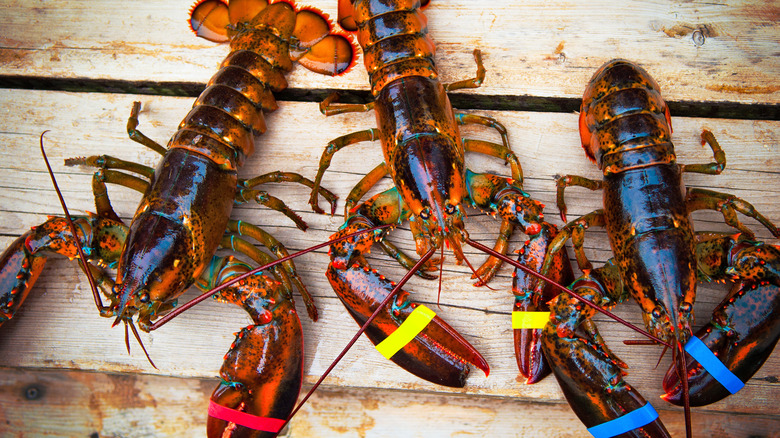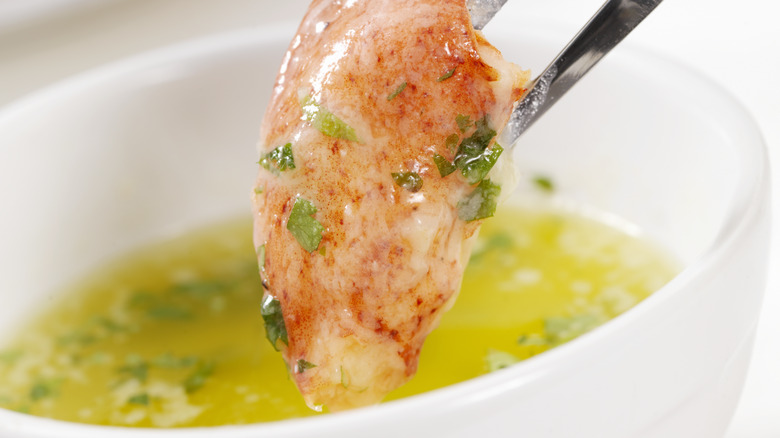When Making Butter Poached Lobster, Always Opt For Cold Water Varieties
Lobster purists may scoff at the idea of cooking the world's most famous crustacean in any way other than in boiling seawater. Still, there's something to be said for luxury, and butter poaching is a very luxurious technique indeed. As you might imagine, butter poaching is like regular poaching, only instead of water, you use lots of melted butter. It's a wonderfully flavorful way to cook lobster — but not all lobster varieties work well for this method of preparation.
There are two distinct varieties of lobster: warm water and cold water. Warm water lobsters, as their name implies, live in warmer climates like the Caribbean Sea or off the Florida coast. They are much more shrimp-like in their appearance and tend to have a saltier, fishier flavor. Cold water lobsters, on the other hand, are those big clawed critters you see coming from Maine or other Northern Atlantic and Pacific waters. The cold temperatures of the water keep the meat from taking on too much salt, leading to an overall sweeter flavor.
The biggest difference here is the textural quality of the tail meat. The texture of cold water lobsters is much firmer. Exposing them to a long, gentle cook in a vat of butter will only increase flavor, as opposed to ruining texture. In contrast, warm water lobsters have softer meat that can easily turn to pulp when cooked outside of their shells. It's really a no-brainer which type to choose when cooking lobster this way.
How to butter poach lobster
Butter poaching starts with melting down the butter. It's good practice to add a few tablespoons of olive oil to help keep the butter from burning; you'll need about a cup of melted butter to 2 tablespoons of olive oil to poach 8 lobster tails. You can either melt the butter all at once or cook some flavors into it by sauteing some onions, shallots, garlic, or leeks.
Lobster tails — from cold water lobsters, of course — are the way to go for this meal. They have the sweetest flavor, firmest texture, and provide the most meat for the money. They can be bought fresh or frozen with the shell intact, so you'll need to remove that before poaching the tails. Depending on the size of your pan and how many tails you're cooking, you can poach them all at once or in batches. They should cook for about 6 to 8 minutes on medium-low heat, flipped every few minutes so they cook evenly; you're looking for an internal temperature of between 130 and 135 degrees Fahrenheit.
The finished tails can be served over a bed of pasta or risotto, or even just as they are with minimal sides. The remaining butter can be used to whip up a delectable sauce. If you've used the sweeter, firmer cold water lobster meat, the end result should be a rich, succulent flavor filled with creamy, buttery notes.

